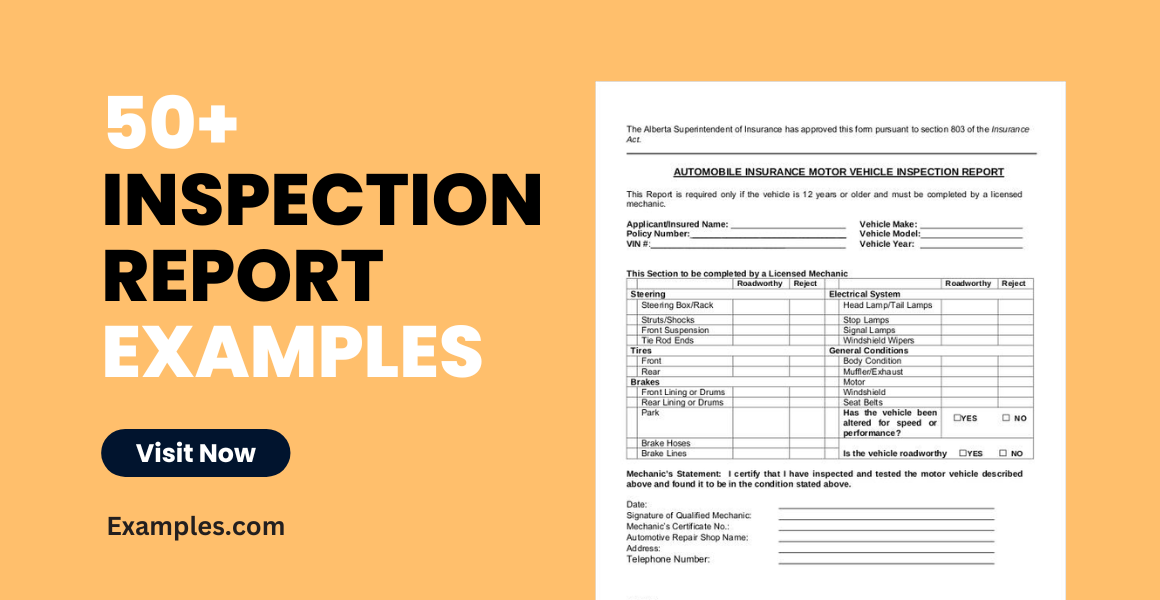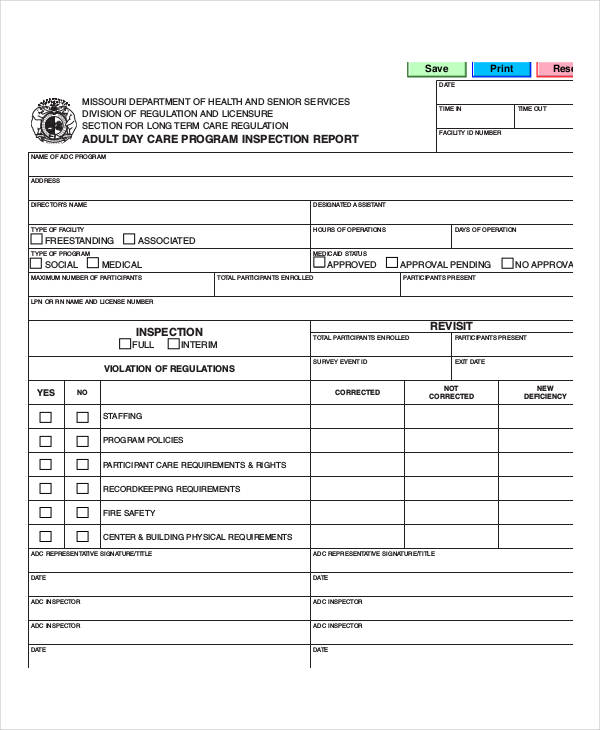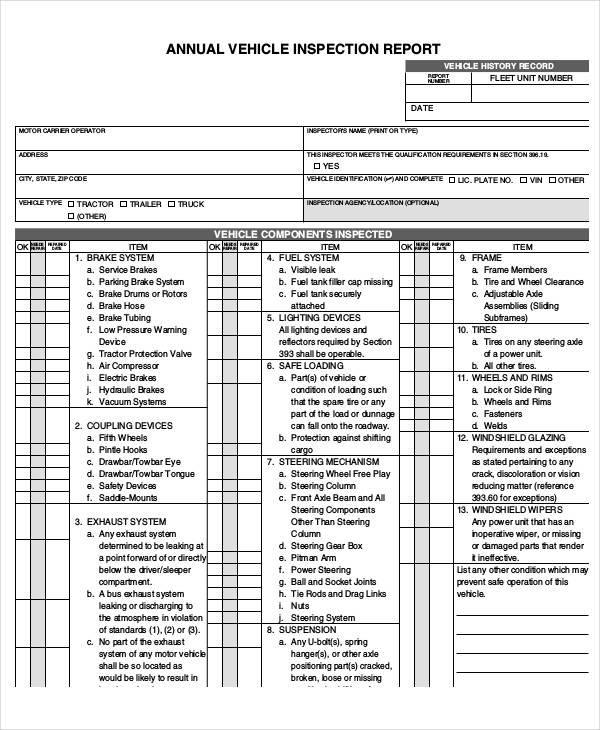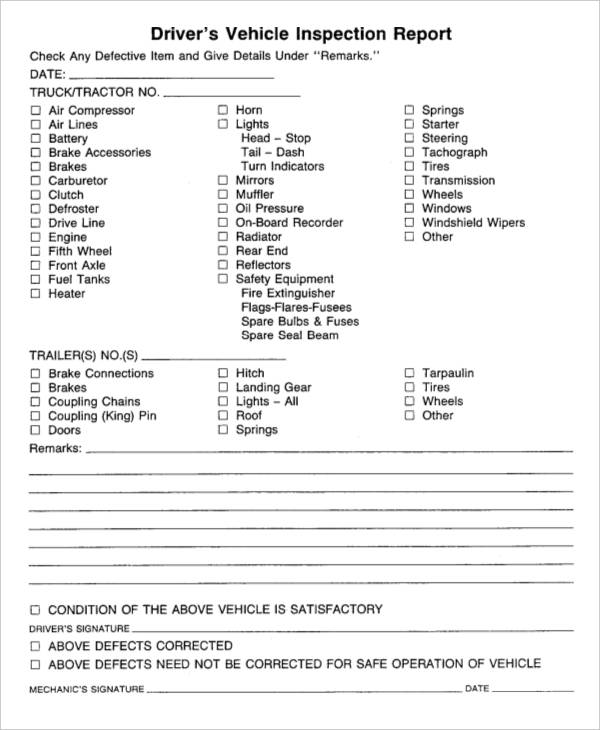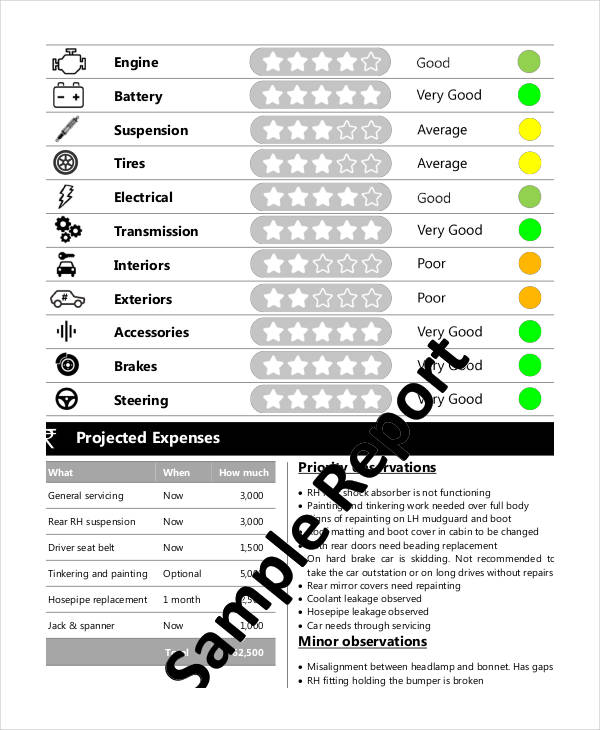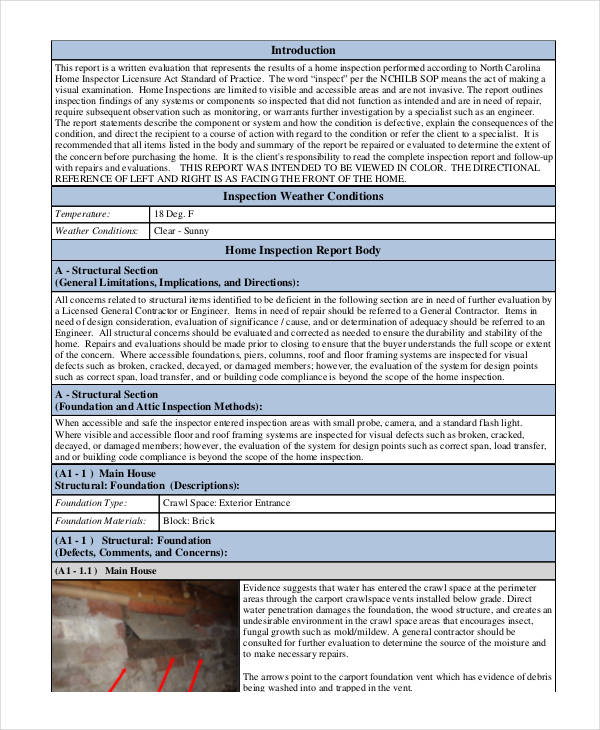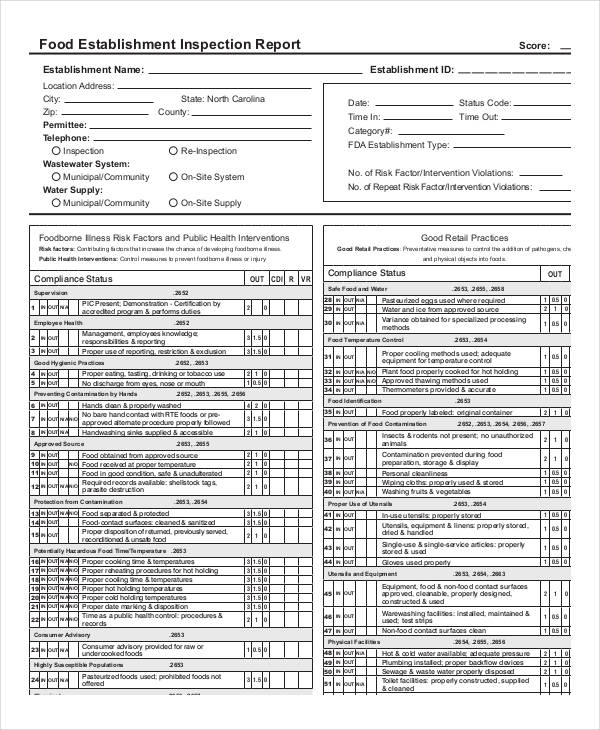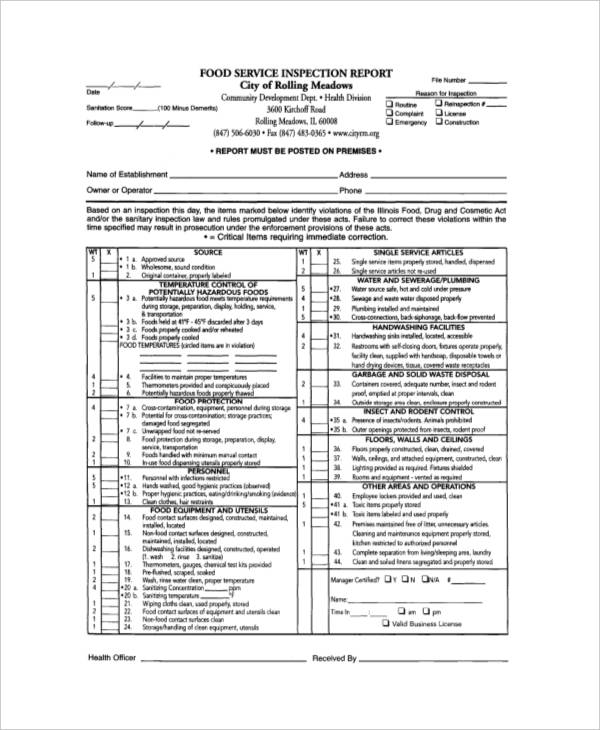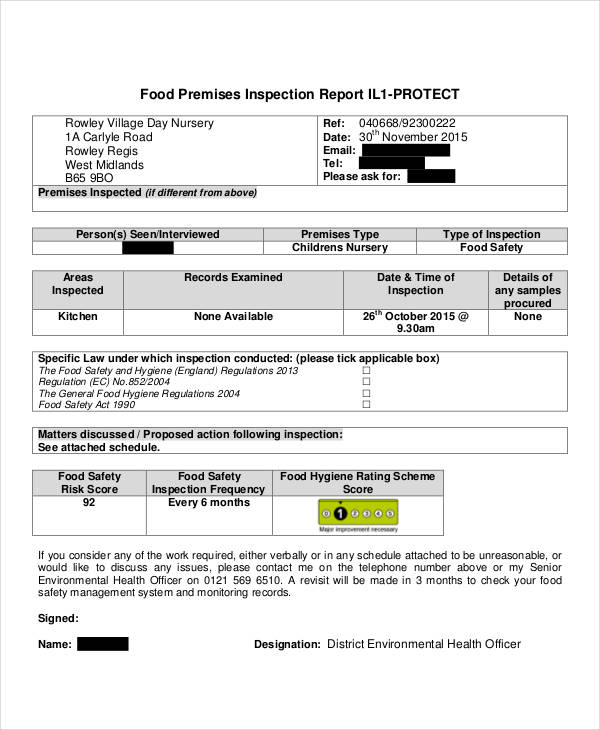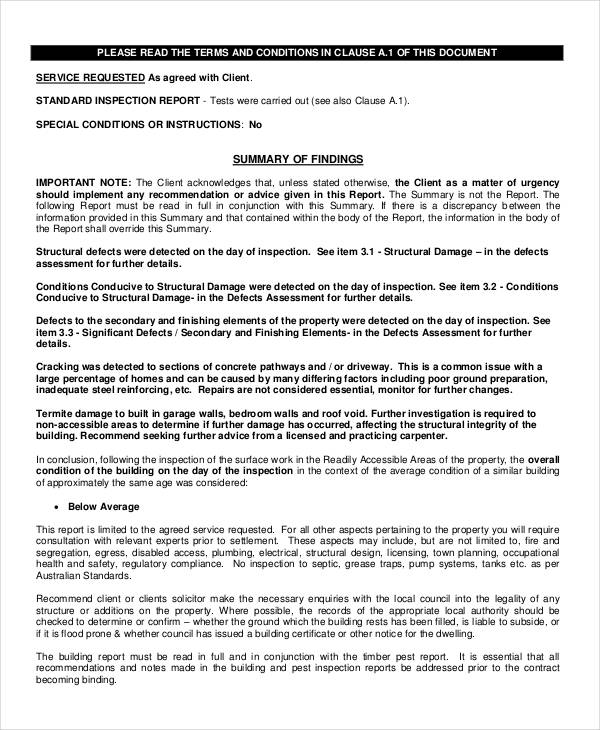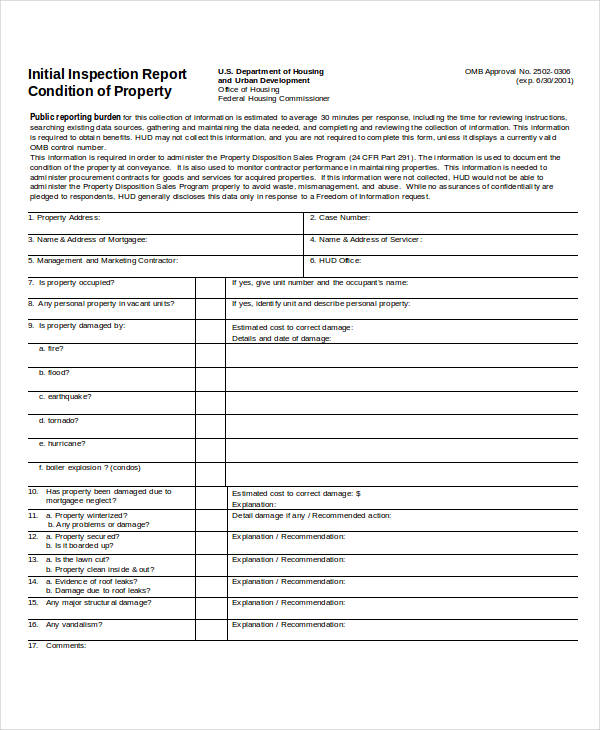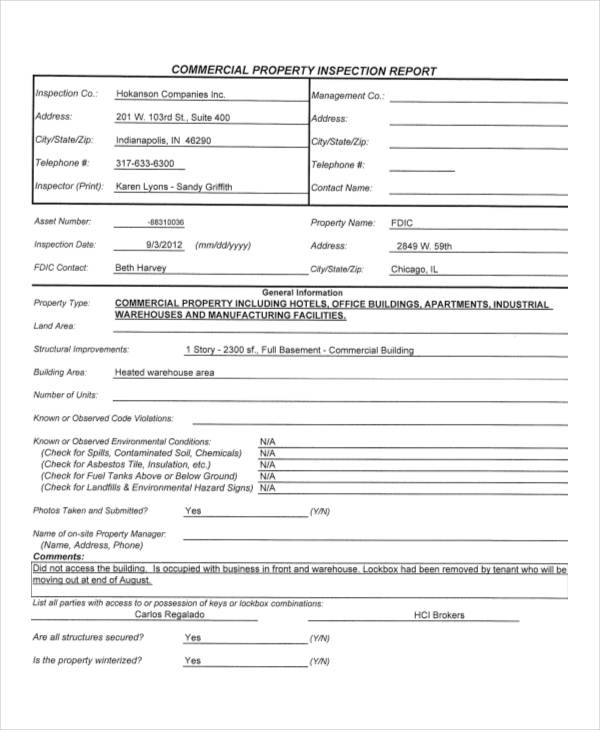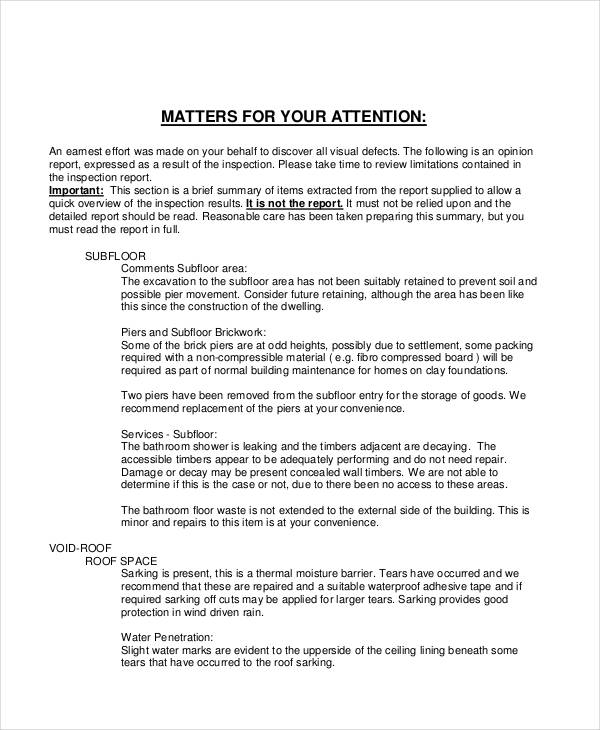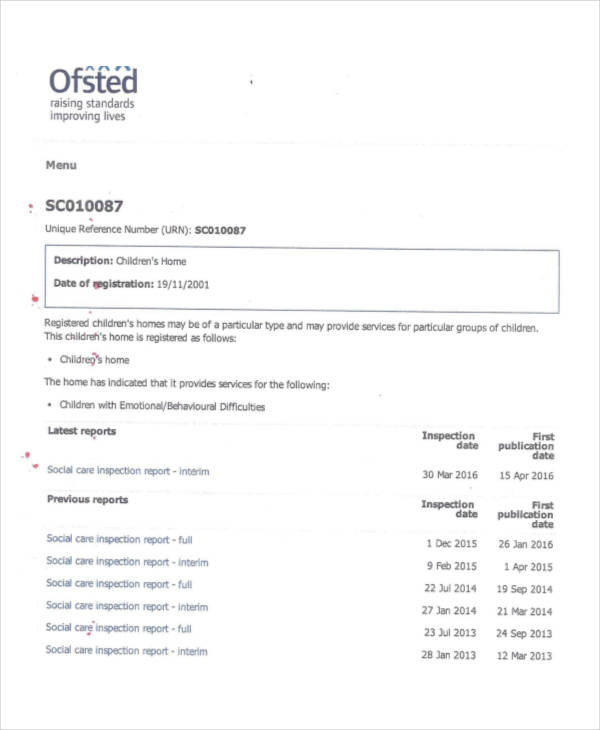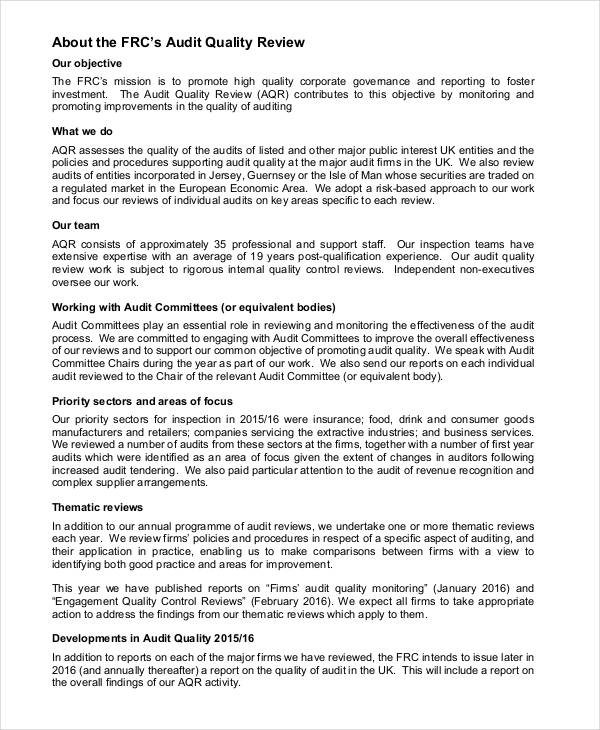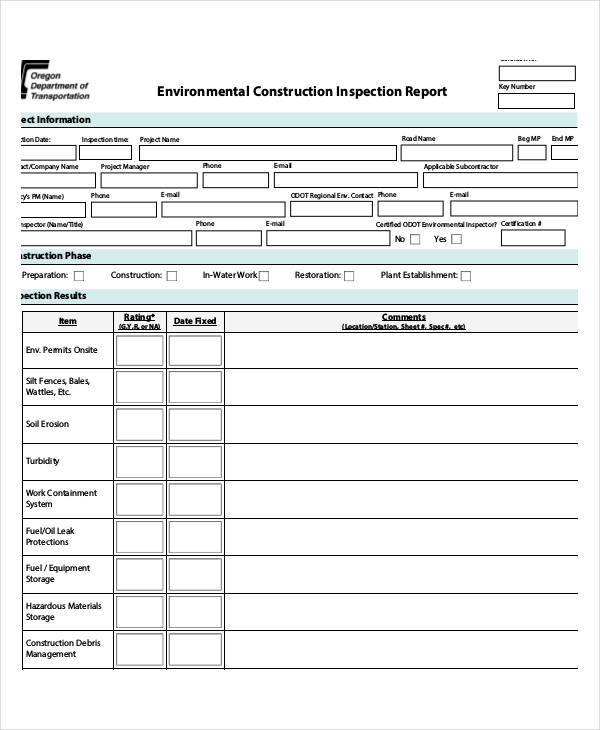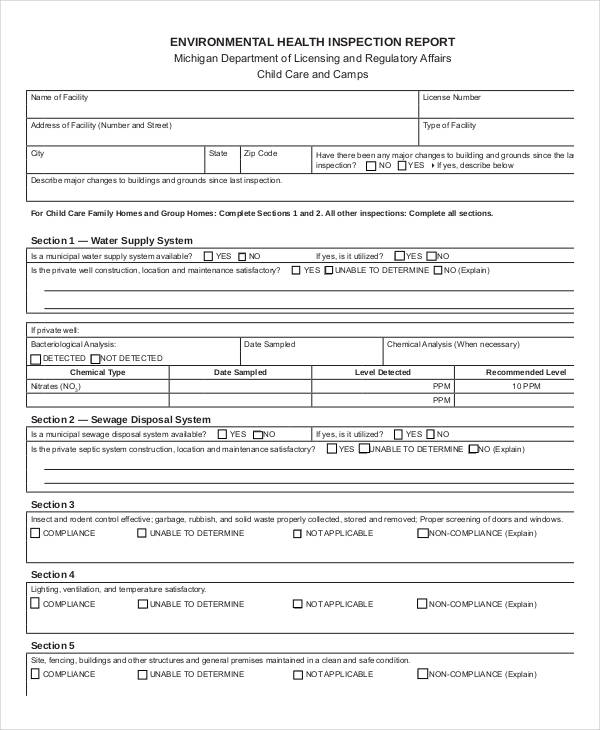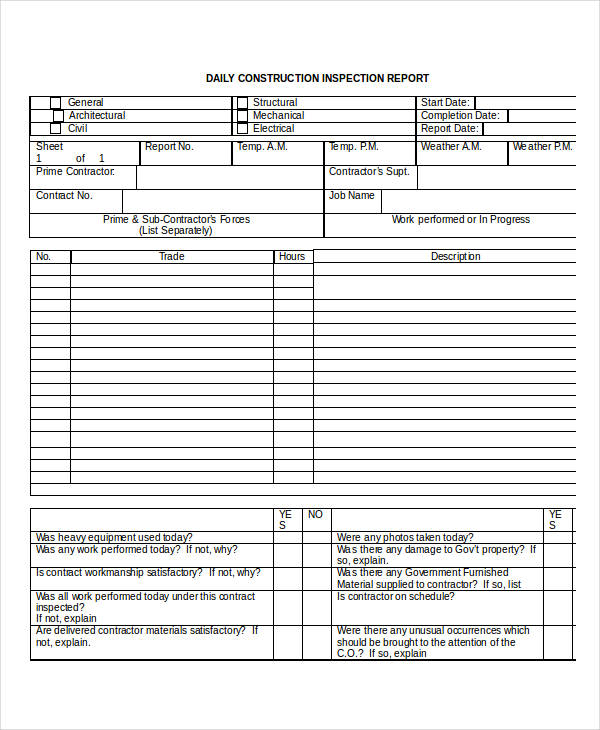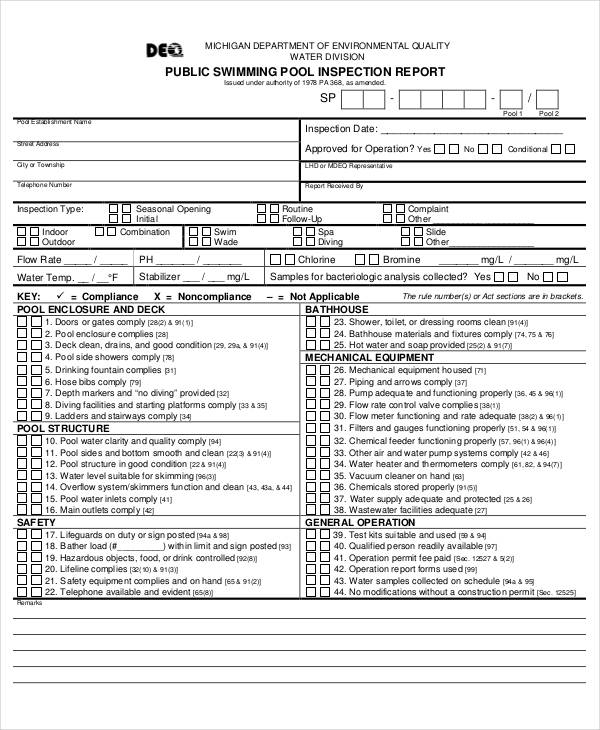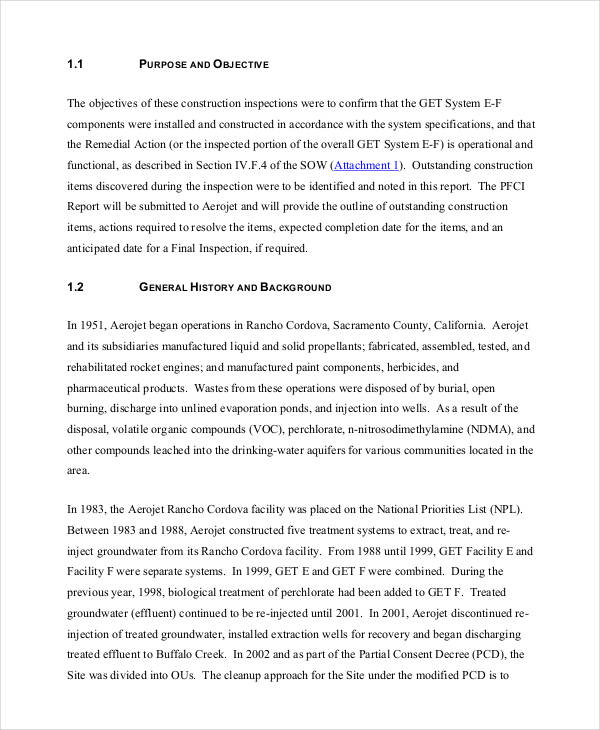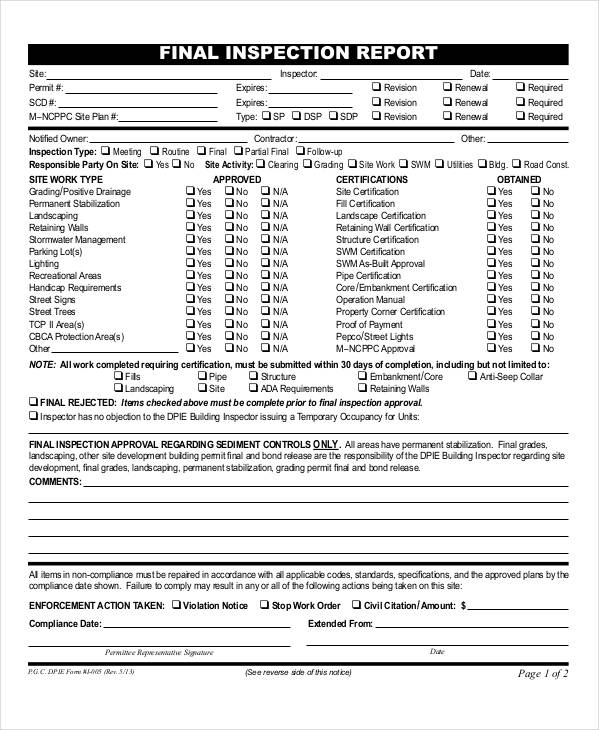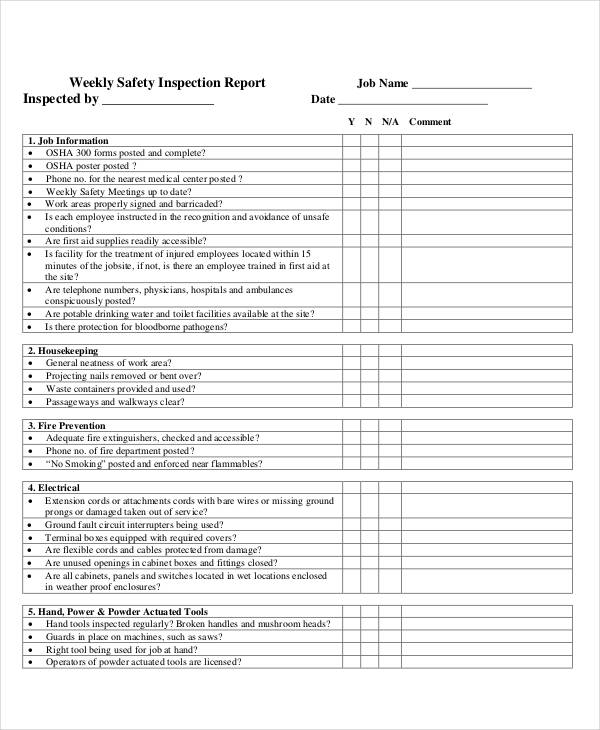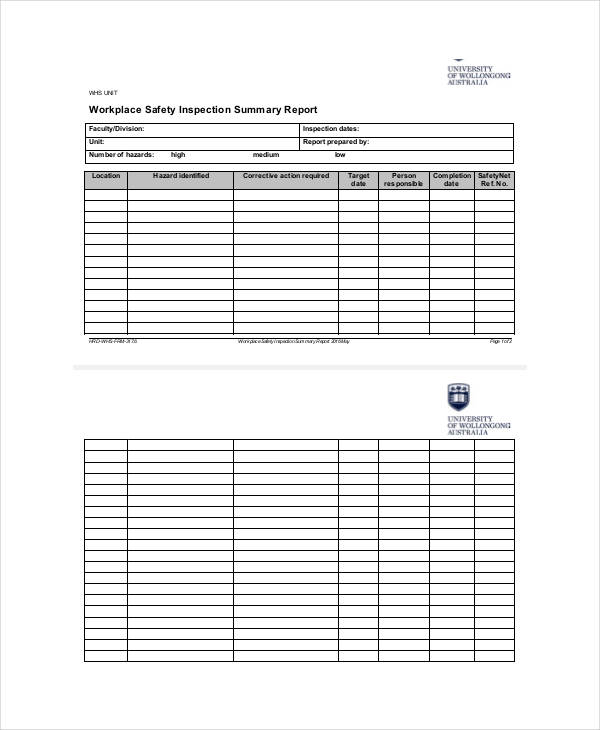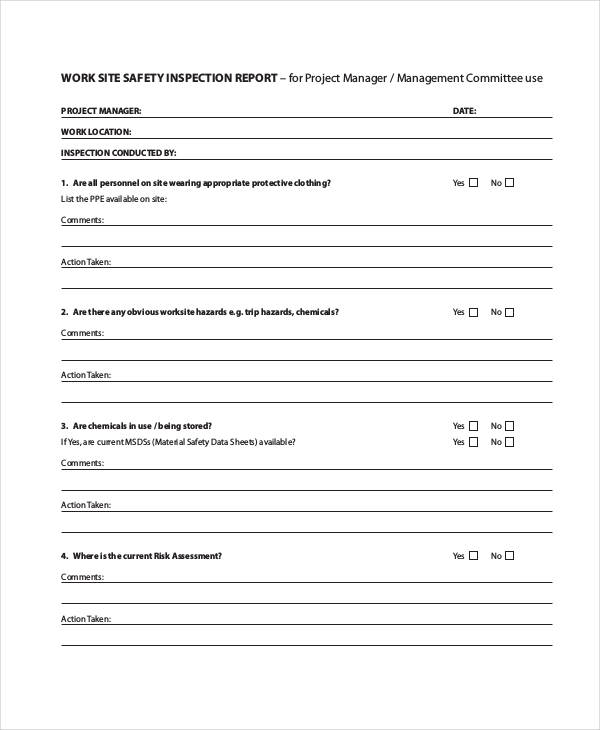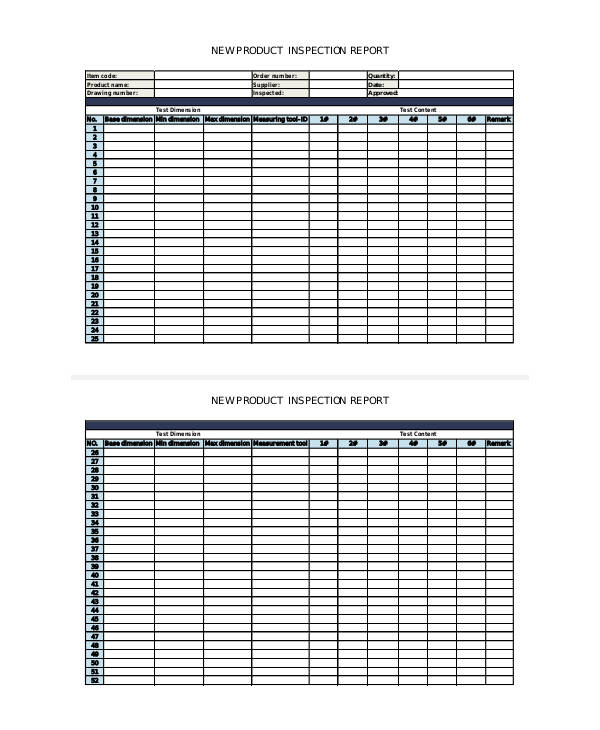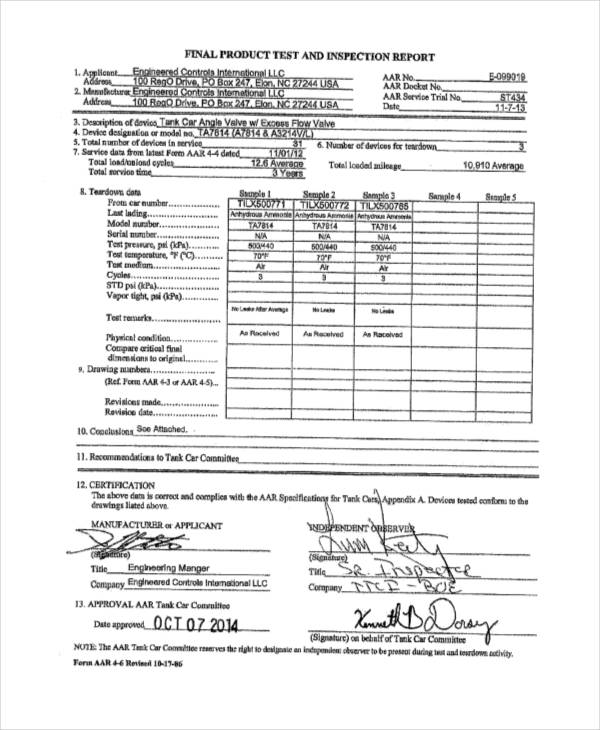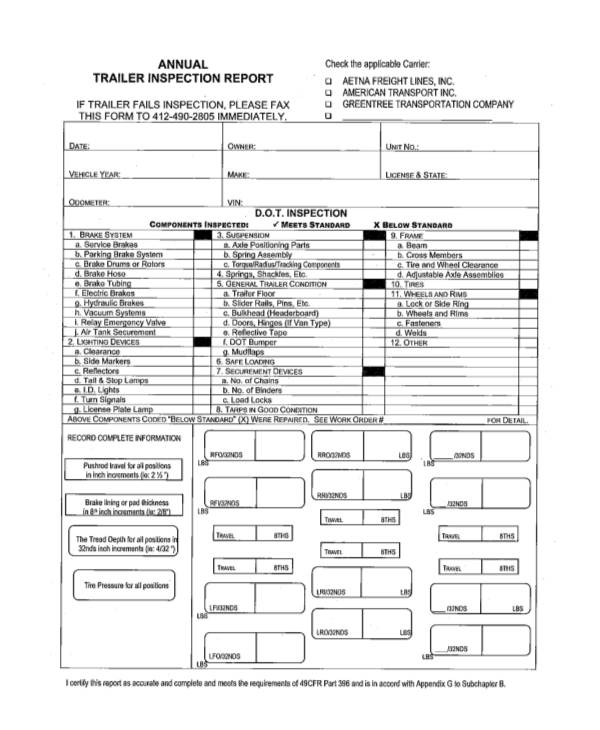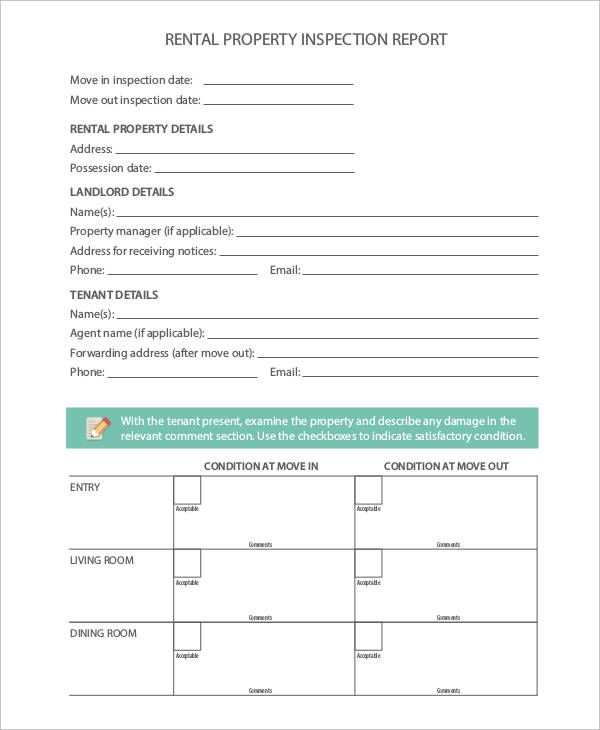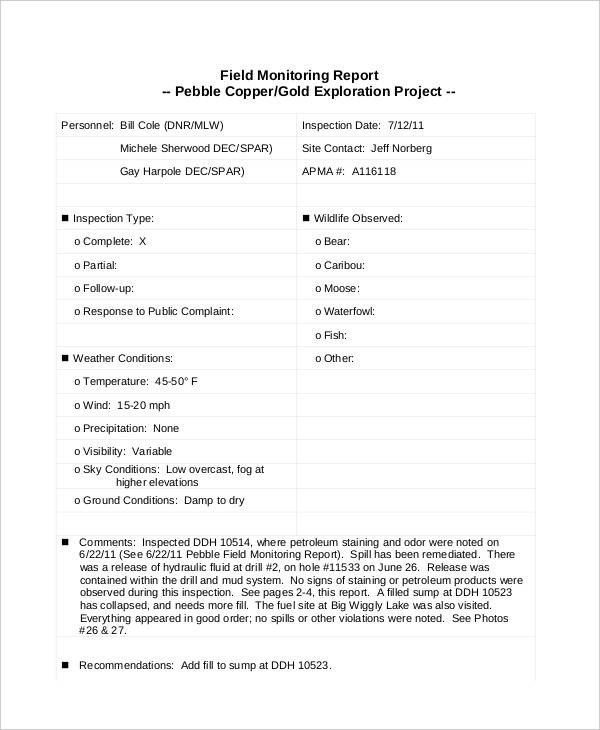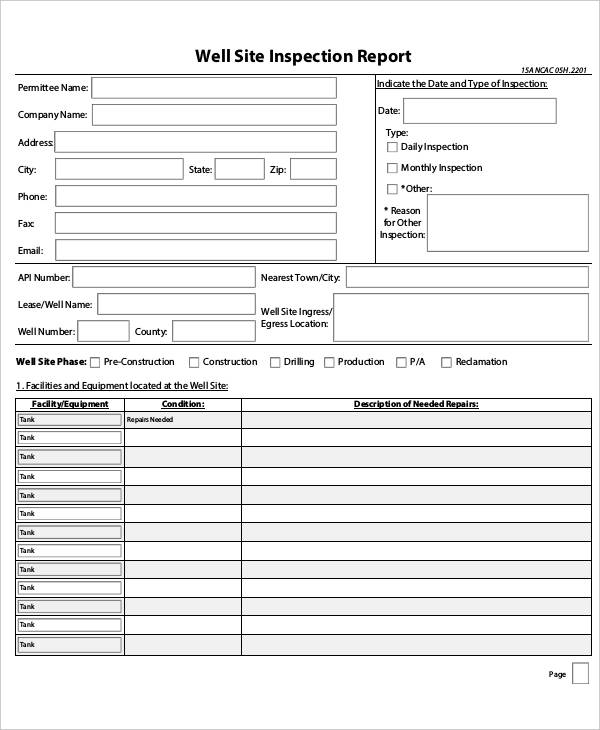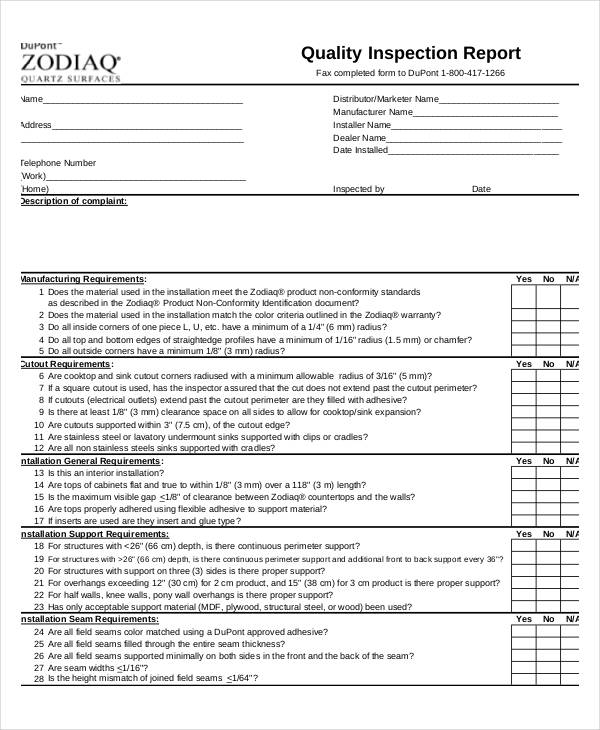50+ Inspection Report Examples to Download
At home, parents would always want to make sure that their kids are safe. Perhaps, that should be residential properties are for—to provide safety and convenience. But in the event of building cracks and damages, homeowners would always want to make sure that no danger will ever come in their way. Therefore, an inspection company must do an assessment and come up with a comprehensive result written in a report document. This guarantees that, whether in a private or commercial property, a quality control will help protect the building’s condition. Learn more by checking out the following inspection report examples.
50+ Inspection Report Examples
1. Inspection Report Template
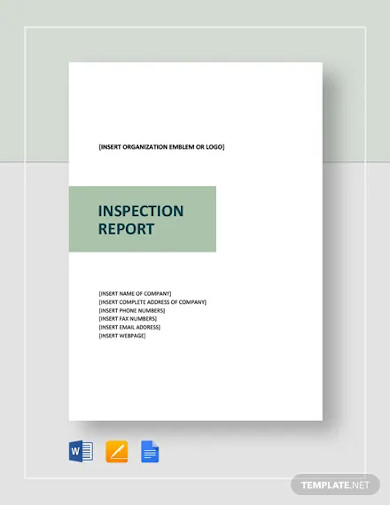
2. Restaurant Inspection Report Template

3. Home Inspection Report Template
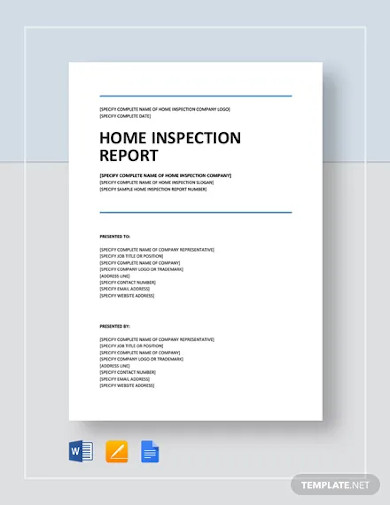
4. Construction Inspection Report Template

5. Buyer’s Property Inspection Report Template
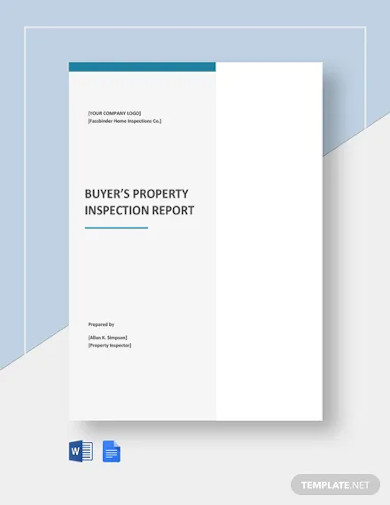
6. Building Inspection Report Sample
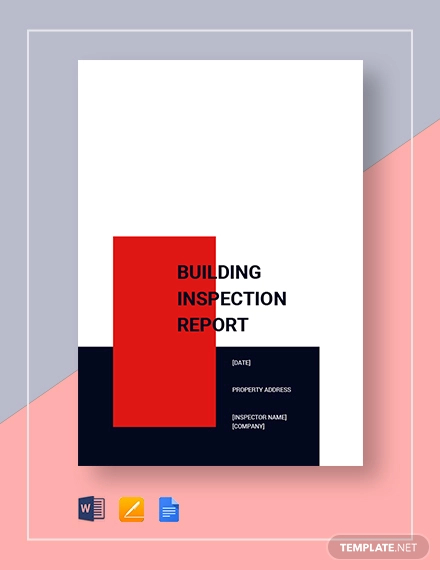
7. Inspection Report Template

8. Home Inspection Report Template

9. Free Monthly Safety Inspection Report Template
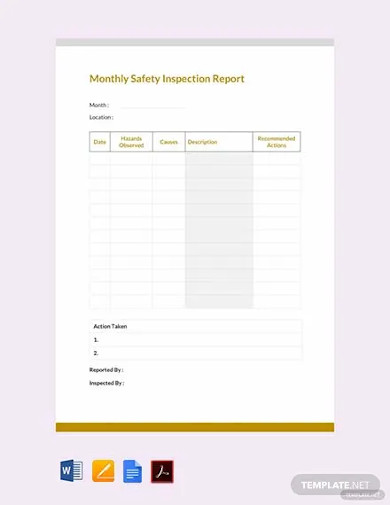
10. Free Construction Daily Inspection Report
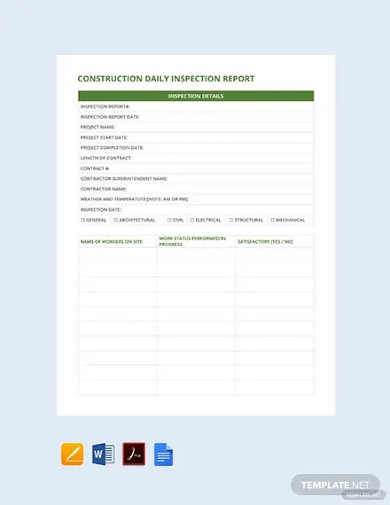
11. Adult Day Care Inspection Example
12. Daycare Fire Report
13. Annual Vehicle Report
14. Driver Vehicle Inspection Sample
15. Motor Vehicle Inspection Report
16. Car Inspection Report
17. Home Inspection Report in PDF
18. Free Home Inspection Example
19 Food Establishment Inspection Sample Report
20. Food Service Inspection Example
21. Food Premises Inspection Report
22. Building Inspection Report
23. Sample Roof Inspection Report
24. Initial Property Report
25. Commercial Property Inspection Sample
26. Standard Property Inspection Report
27. Social Care Inspection Report
28. Audit Quality Inspection Example
29. Building Structural Report
30. Environmental Construction Inspection Report
31. Environmental Health Report
32. Daily Construction Inspection Report
33. New Construction Inspection Sample
34. Public Swimming Pool Inspection Report
35. Pool Safety Inspection Report
36. Final Construction Report
37. Final Inspection Report in PDF
38. Weekly Safety Inspection Report
39. Workplace Safety Inspection Report
40. Site Safety Inspection Report
41. New Product Inspection Report
42. Final Product Inspection Report
43. Annual Trailer Inspection Report
44. Electrical Periodic Inspection Report
45. Annual Periodic Vehicle Report
46. Rental Property Inspection Report
47. Field Inspection Report in PDF
48. Well Site Inspection Report
49. Hotel Site Inspection Report
50. Quality Inspection Report
What Is an Inspection Report?
An inspection report is a substantial document that contains the result of the property examination. Including in the evaluation report are photos, equipment, drawing or sketch, and the overall summary report.
The Worth of Catastrophic Damages
In 2017, lives were taken, and houses were damaged due to the severe calamity that brought people to homelessness. Some remained calm as the damages were visible with their homes. Perhaps, according to a data analysis published by the Insurance Information Institute, the US recorded $78 billion losses due to wildfires and droughts. This has severely affected many lives. So, before people can go back to their homes, it is always a substantial process to do a written safety plan. Through inspection reports, the government can assess whether or not it is safe for the people to go back to their normal lives.
How To Write an Inspection Report
Preparing an inspection report form needs a thorough process, including investigation and examination. It has to be legitimate and comprehensive to be considered. Therefore, you must write facts and not opinions. With that, follow the list of steps below to come up with the right report.
1. Know Your Audience
Writing a building inspection report means writing it for a particular audience. So, to start with, always know who your audiences are. Since there is various information that you can add, it would be useful to write down relevant details. Achieve this by recognizing different types of inspection report plans, including the external, internal, confidential, and executive. These will help you come up with an accurate and easy to understand results.
2. Include the Correct Sections
Once you already identify your audience, make a well-written safety report by including all the necessary sections. Highlight the title, executive summary, systematic observations, analysis and solution, and conclusion into your document. With this, you can highlight the key points that the audience will entirely understand.
3. Observe Preciseness of Stating Facts
Whether for a project, truck, vehicle, or construction, in your property inspection report, make sure that you only highlight the facts, and nothing else. Perhaps, this is the primary purpose of an inspection report—to recognize and characterize issues and damages. For example, observation of 50% pest trails in the kitchen pipes. This analysis gives a more precise and direct analysis, which is beneficial for the client. Therefore, you have to be very careful with word usage by proofreading the assessment.
4. Follow-up the Process
Even when there is already a precise analysis, follow-up procedures are substantial in a corrective action plan for the next step. Make sure that you have a thorough discussion with your clients. With this, they will understand their responsibilities for the later stages.
FAQs
What makes a good home inspection report?
A good home inspection report must be well-organized. It must layout and present a logical and systematic observation for a better solution.
What are the methods of negotiating home inspection?
Two of the methods that you may consider when negotiating home inspection is to avoid sharing too much and discuss price adjustments.
What should the sellers fix after the inspection?
For most, sellers must take responsibility for fixing required actions when there are structural defects and violations of the building code.
Damages and property issues are inevitable. Therefore, it would be best to have them checked regularly. For the inspection company to provide an extensive analysis, a safety inspection form must be prepared. This is not only to address the issue, but it helps clients to know more about their responsibilities. So, make a document by following the steps above.


